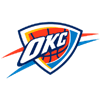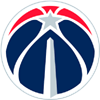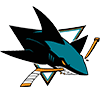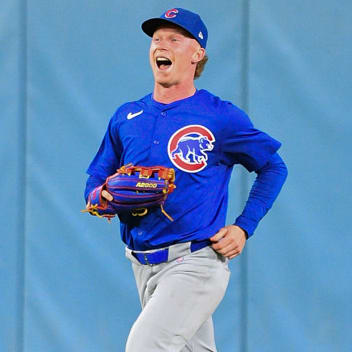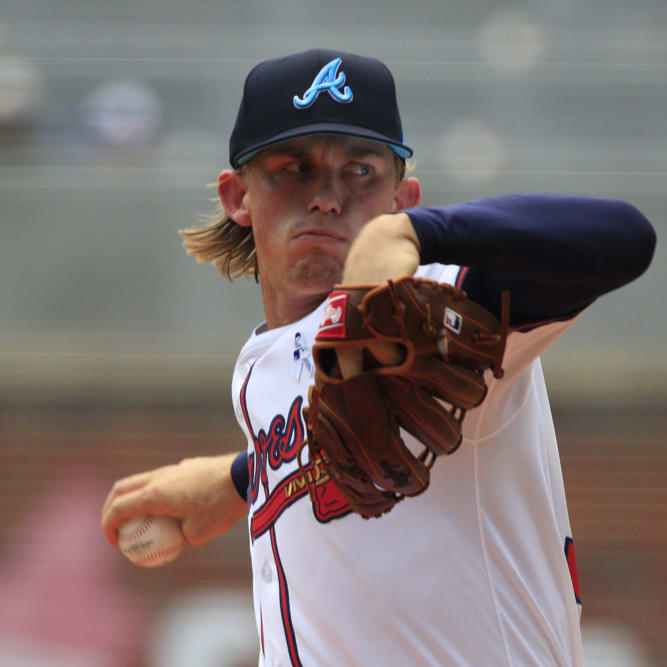We knew coming into the 2023 season that it was going to be an adjustment for some pitchers, as they could no longer take their sweet time on the mound to recover between pitches. The time some pitchers would take with nobody on base could be long, but it was often even longer with someone on base as pitchers with slow deliveries would rely upon varying their timing to keep baserunners off balance. The new measures are clearly working to expedite the speed of the game, as the graph below shows:

Pitchers losing the weapon of delay were forced to changed mechanics, work on a new move or simply bear down on the batter at the plate and let the runners do what they will. Simply put, we know those efforts have not been terribly successful given that Bryson Stott pushed the league over the 3,000 stolen base mark earlier this week. The league is well on pace to eclipse the 3,302 stolen bases I predicted back in mid-March in the redux version of the Buckle Up articles I've written on this subject. However, it is the first installment of that two-part series I would like to revisit here.
The latter half of that article contained a table of pitchers who were particularly prone to allowing stolen bases in 2022:
PITCHER | TEAM | SBO | SB | CS | SB% | SBA |
|---|---|---|---|---|---|---|
TOT | 195 | 30 | 3 | 91% | 17% | |
MIA | 270 | 24 | 4 | 86% | 10% | |
NYM | 79 | 19 | 3 | 86% |
We knew coming into the 2023 season that it was going to be an adjustment for some pitchers, as they could no longer take their sweet time on the mound to recover between pitches. The time some pitchers would take with nobody on base could be long, but it was often even longer with someone on base as pitchers with slow deliveries would rely upon varying their timing to keep baserunners off balance. The new measures are clearly working to expedite the speed of the game, as the graph below shows:

Pitchers losing the weapon of delay were forced to changed mechanics, work on a new move or simply bear down on the batter at the plate and let the runners do what they will. Simply put, we know those efforts have not been terribly successful given that Bryson Stott pushed the league over the 3,000 stolen base mark earlier this week. The league is well on pace to eclipse the 3,302 stolen bases I predicted back in mid-March in the redux version of the Buckle Up articles I've written on this subject. However, it is the first installment of that two-part series I would like to revisit here.
The latter half of that article contained a table of pitchers who were particularly prone to allowing stolen bases in 2022:
PITCHER | TEAM | SBO | SB | CS | SB% | SBA |
|---|---|---|---|---|---|---|
TOT | 195 | 30 | 3 | 91% | 17% | |
MIA | 270 | 24 | 4 | 86% | 10% | |
NYM | 79 | 19 | 3 | 86% | 28% | |
BOS | 284 | 19 | 6 | 76% | 9% | |
TOR | 260 | 18 | 4 | 82% | 8% | |
SFG | 236 | 18 | 2 | 90% | 8% | |
WSN | 204 | 17 | 2 | 89% | 9% | |
PIT | 284 | 17 | 3 | 85% | 7% | |
SEA | 246 | 17 | 9 | 65% | 11% | |
CIN | 185 | 16 | 0 | 100% | 9% | |
TEX | 222 | 16 | 2 | 89% | 8% | |
CLE | 257 | 16 | 4 | 80% | 8% | |
ARI | 256 | 15 | 5 | 75% | 8% | |
SFG | 224 | 15 | 2 | 88% | 8% | |
COL | 278 | 15 | 6 | 71% | 8% | |
TEX | 176 | 15 | 2 | 88% | 10% | |
CHW | 149 | 15 | 4 | 79% | 13% | |
WSN | 279 | 14 | 5 | 74% | 7% | |
SDP | 235 | 14 | 2 | 88% | 7% | |
ARI | 256 | 14 | 3 | 82% | 7% | |
CIN | 116 | 14 | 0 | 100% | 12% | |
SFG | 282 | 14 | 5 | 74% | 7% | |
OAK | 135 | 13 | 2 | 87% | 11% | |
SDP | 169 | 13 | 1 | 93% | 8% | |
LAA | 190 | 13 | 4 | 76% | 9% | |
It was rather laughable how often the league ran on Adam Ottavino and Noah Syndergaard, but they were clearly not alone in how frequently the league ran on them. I want to look at how these pitchers did last year despite this issue and how their numbers changed in 2023 under the new rules. The table below shows how successfully the league swiped bases while said pitcher was on the mount (SB%) as well as how often they attempted a steal (SBA%) with said pitcher on the mound:
PITCHER | 22 SB% | 22 SBA% | 23 SB% | 23 SBA% |
|---|---|---|---|---|
97% | 27% | 91% | 17% | |
85% | 8% | 86% | 10% | |
95% | 26% | 86% | 28% | |
92% | 8% | 76% | 9% | |
83% | 10% | 82% | 8% | |
100% | 6% | 90% | 8% | |
92% | 5% | 85% | 7% | |
80% | 28% | 89% | 8% | |
88% | 7% | 80% | 8% | |
75% | 9% | 75% | 8% | |
79% | 7% | 88% | 8% | |
65% | 9% | 71% | 8% | |
61% | 9% | 88% | 10% | |
83% | 17% | 79% | 13% | |
73% | 12% | 74% | 7% | |
81% | 10% | 88% | 7% | |
73% | 7% | 82% | 7% | |
80% | 9% | 74% | 7% | |
75% | 7% | 87% | 11% | |
95% | 13% | 93% | 8% | |
83% | 9% | 76% | 9% | |
Syndergaard saw both of his percentages decline yet both still remained well above the league average for both success rate (80%) as well as attempted rate (7%). Ottavino hasn't adjusted to the new reality, as the league still runs as often as possible on his rather long delivery, while the league has exercised similar liberties with Kopech. On the flip side, Glenn Otto and the Rangers dramatically reduced the frequency of stolen base attempts while he is on the mound despite no change in his batterymates behind the plate. Conversely, Jon Gray has not had the same improvements on the same team with the same catchers. It's also worth noting that despite the presence of Patrick Bailey, Alex Cobb worsened from 2022 while Logan Webb improved. Overall, most of the group has adjusted, as we don't see as many double-digit attempt rates on this list. However, I want to see how the changes in practice affected these creatures of habit given the years of muscle memory and habit building these pitchers went through until the end of the 2022 season, when they were then asked to drastically adjust their course.
To do that, the table below shows some of the pitcher outcomes from 2022 compared to their numbers this current season:
2022 OUTCOMES | 2023 OUTCOMES | |||||||||
| Pitcher | ERA | HR/9 | AVG | LOB% | K-BB% | ERA | HR/9 | AVG | LOB% | K-BB% |
| Adam Ottavino | 2.06 | 0.8 | 0.203 | 89% | 24% | 3.05 | 1.1 | 0.199 | 86% | 12% |
| Alex Cobb | 3.73 | 0.5 | 0.260 | 68% | 17% | 3.74 | 1.1 | 0.271 | 78% | 15% |
| Cal Quantrill | 3.38 | 1.0 | 0.250 | 76% | 11% | 5.70 | 0.9 | 0.274 | 63% | 5% |
| Carlos Rodon | 2.88 | 0.6 | 0.200 | 75% | 26% | 6.60 | 2.3 | 0.246 | 67% | 10% |
| Glenn Otto | 4.64 | 1.4 | 0.232 | 73% | 8% | 10.13 | 5.1 | 0.311 | 69% | 10% |
| Jon Gray | 3.96 | 1.2 | 0.221 | 71% | 18% | 3.96 | 1.1 | 0.245 | 75% | 13% |
| Kevin Gausman | 3.35 | 0.8 | 0.270 | 74% | 24% | 3.28 | 0.9 | 0.236 | 75% | 25% |
| Kyle Freeland | 4.53 | 1.0 | 0.277 | 71% | 10% | 5.09 | 1.7 | 0.293 | 70% | 8% |
| Logan Webb | 2.90 | 0.5 | 0.238 | 72% | 14% | 3.40 | 0.9 | 0.246 | 73% | 19% |
| Madison Bumgarner | 4.88 | 1.4 | 0.280 | 69% | 9% | 10.26 | 2.2 | 0.338 | 59% | -6% |
| Merrill Kelly | 3.37 | 0.9 | 0.225 | 76% | 14% | 3.16 | 1.0 | 0.222 | 78% | 17% |
| Michael Kopech | 3.54 | 1.1 | 0.196 | 74% | 10% | 5.19 | 2.1 | 0.228 | 80% | 7% |
| Mike Clevinger | 4.33 | 1.6 | 0.232 | 76% | 12% | 3.64 | 1.0 | 0.237 | 77% | 12% |
| Mitch Keller | 3.91 | 0.8 | 0.263 | 73% | 11% | 4.23 | 1.1 | 0.252 | 72% | 19% |
| Nick Pivetta | 4.56 | 1.4 | 0.252 | 75% | 13% | 4.54 | 1.7 | 0.219 | 72% | 21% |
| Noah Syndergaard | 3.94 | 0.9 | 0.260 | 72% | 11% | 6.50 | 2.2 | 0.287 | 67% | 9% |
| Patrick Corbin | 6.31 | 1.6 | 0.320 | 64% | 11% | 5.23 | 1.7 | 0.293 | 71% | 9% |
| Paul Blackburn | 4.28 | 1.2 | 0.255 | 74% | 13% | 3.88 | 0.8 | 0.282 | 76% | 15% |
| Reid Detmers | 3.77 | 0.9 | 0.227 | 74% | 14% | 4.82 | 1.2 | 0.255 | 70% | 16% |
| Sandy Alcantara | 2.28 | 0.6 | 0.210 | 79% | 18% | 4.14 | 1.1 | 0.248 | 70% | 14% |
| Yu Darvish | 3.10 | 1.0 | 0.205 | 78% | 21% | 4.56 | 1.2 | 0.256 | 71% | 17% |
These pitchers averaged a 3.80 ERA, 1.02 HR/9 and a .240 batting average against while stranding 74 percent of their baserunners along with a 15 percent strikeout minus walk percentage in 2022. This season, these same pitchers have an average ERA of 5.00 with 1.6 HR/9 and a .260 batting average against while stranding 72 percent of their baserunners with a 13 percent strikeout minus walk ratio.
As a group, the impact is indisputable, but it would be foolish to believe this was the only contributing factor. After all, Jon Gray has the same 3.96 ERA this season as he had last season and Alex Cobb is just .01 away from last season's ERA. Kevin Gausman has improved hs outcomes ever so slightly, as has Merrill Kelly. If anything, the new order has been harshest to two of the better pitchers on this list in Alcantara and Darvish, as their outcomes look dramatically different this season compared to what they did in 2022. I raise that point because even Cy Young winners struggled to adjust to the new rules this season. Simply put, the need to adjust does not discriminate. This was an adjustment season for some, so it will be interesting to see what lessons were learned by all types of pitchers as they look to 2024 and how they will course correct.








